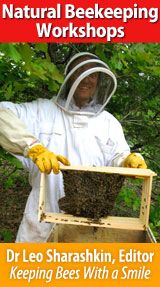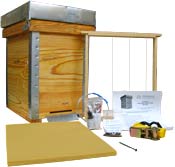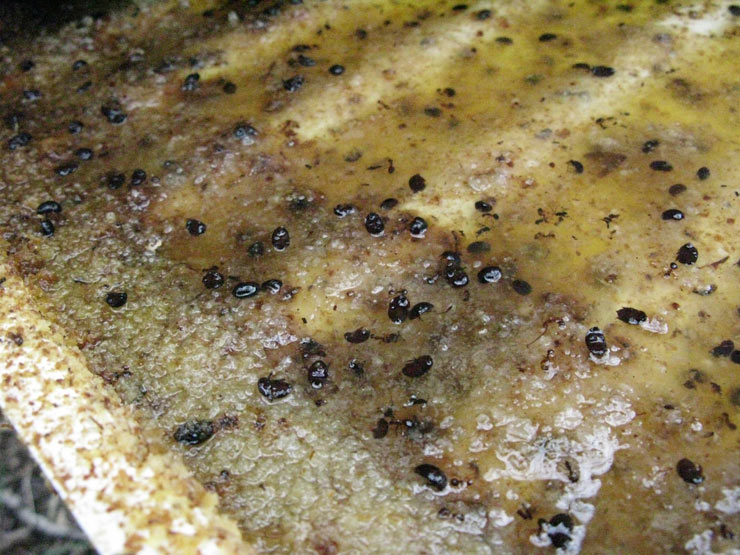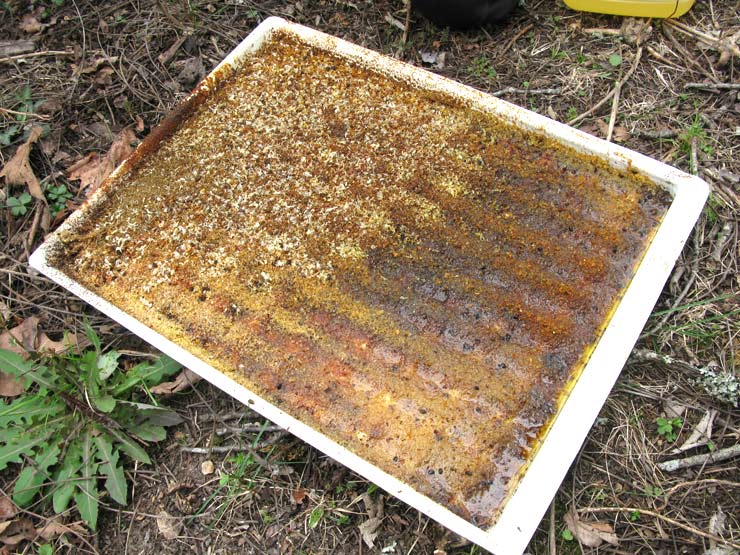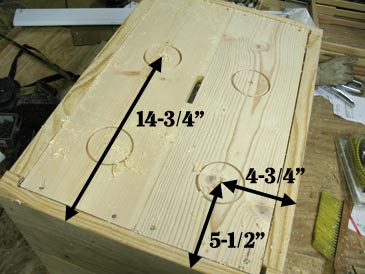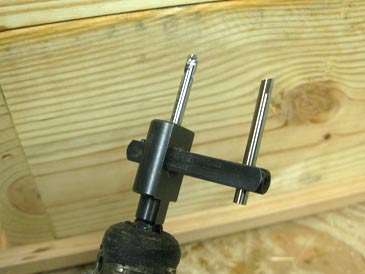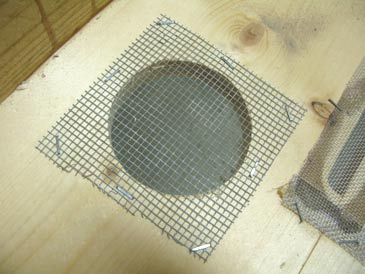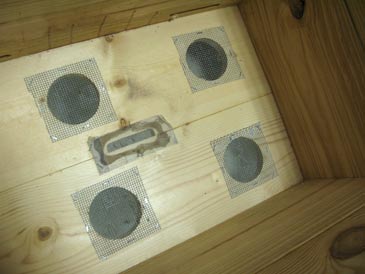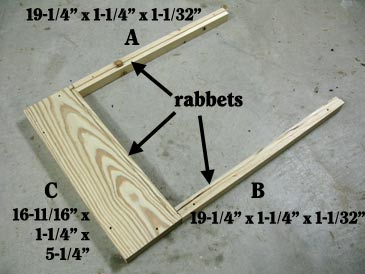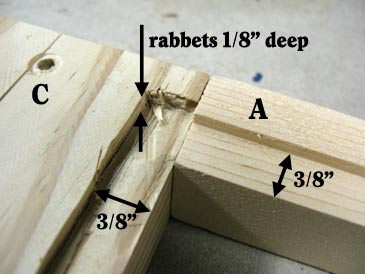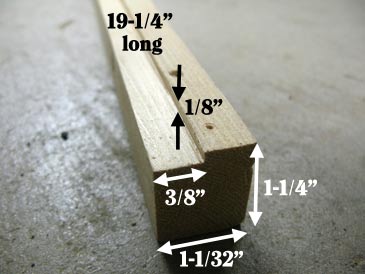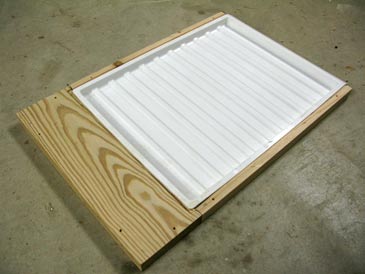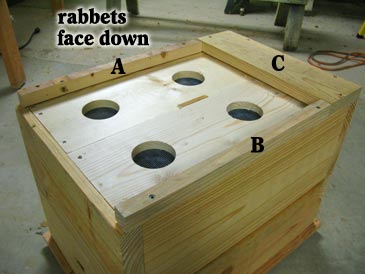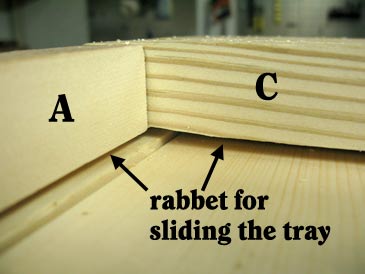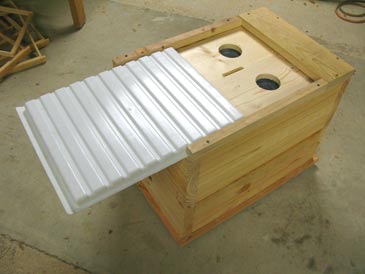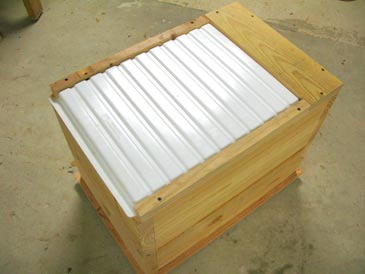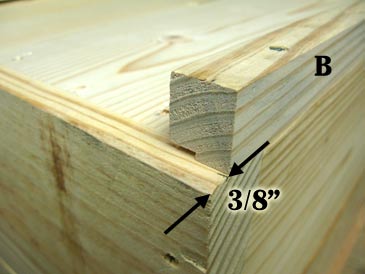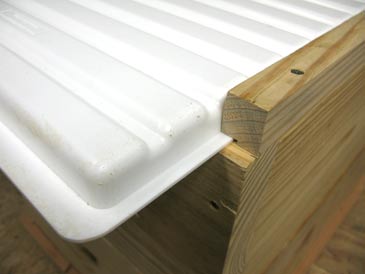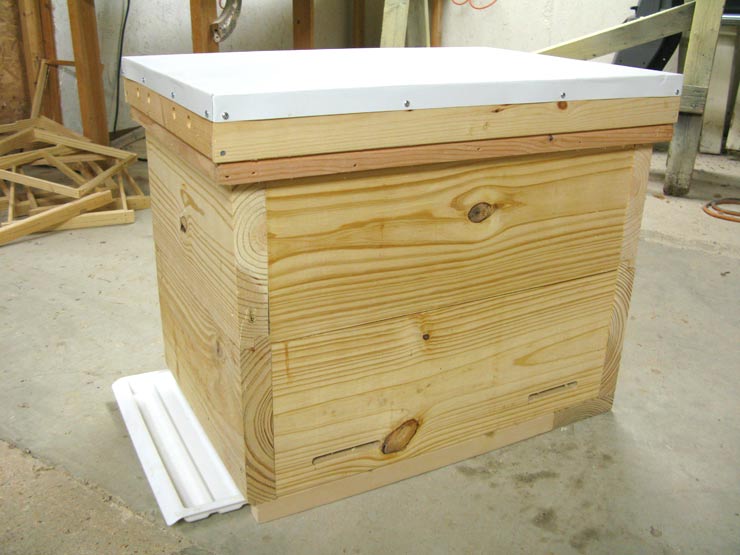Screened Bottom for Layens Hives – Free Plans
LAYENS HIVES & FRAMES AVAILABLE FROM OUR STORE >>
Hives include all frames, fully assembled & ready to go
Combined with an oil pan underneath, screen bottom boards help kill hundreds of small hive beetles and other undesirables.
But oil pans require regular cleaning as they become clogged up with pollen and wax. As foragers unload their pollen loads into cells, they drop some. The same goes for the wax scales produced for comb construction. With solid-bottom hives bees can pick up dropped pollen and wax and reuse it. But falling through the screen bottom, wax and pollen are lost to the bees and accumulate in the tray, turning oil into thick paste. If you don’t remove pollen/wax deposits on time, they absorb all the oil; small hive beetles are then able to walk over this mass without drowning and the pest control tray becomes breeding ground for vermin.
By the way, in the climates where small hive beetles are present, screen bottoms should only be used in combination with oil pans. Bees cannot pass through the 1/8” mesh, but small hive beetles can, so if there are no trays under the screen, large number of beetles will infiltrate the hive through it, making the SHB problem even worse.
After five years of using screen bottom boards in my apiary, I am seeing that these colonies do not perform or survive any better than those in my solid-bottom hives. Which tells me that a strong colony from local survivor stock can handle its pest issues on its own. Bee trees don’t have screen bottoms. So the equipment I build has solid bottoms by default.
I keep using screen-bottom hives as well, and every time I pull out an oil pan stuffed with dead small hive beetles, Varroa mites, wax moths, ants, and roaches, I can tell it helps keep the hive clean, if only you are diligent enough to change the oil on time. (Your mechanic would approve.)
The issue with pollen/wax losses can be resolved by screening only 10% of the floor area. This way most of the dropped pollen and wax are reused in the hive, don’t clog the tray, and I can clean it only twice a year (June & October). At the same time the reduced screen area means not as many mites dropping into the oil pan. It’s a compromise.
Building instructions
Step 1. Start with a completed 14-frame Layens hive, external dimensions 16-11/16” x 24-7/8”. (If your hive is longer, you can still use the screen bottom plans described here.) Flip the hive over, drill four 3” holes 4-3/4” on-center from the long wall and 5-1/2” and 14-3/4” on-center from the short wall. I use an adjustable circle cutter for this operation. It works great — just hold the drill firmly!
Step 2. Cut four 4” x 4” pieces of wire mesh with 1/8” cells, and staple them over the openings, from inside the hive, using 3/8” T50 staples.
Step 3. Cut two bars (A & B) 1-1/4” x 1-1/32” x 19-1/4” and one board (C) 5-1/4” x 1-1/4” x 16-11/16”. Put them together in a U-shape and cut a rabbet 3/8” wide x 1/8” deep along the inner perimeter of this assembly.
Step 4. Position parts A, B and C over the bottom of the hive, flush with the walls, butts of parts A and B 3/8” shy of the edge. Predrill and attach to the hive body with 2” screws. Make sure the screws don’t go through the rabbet. Done!
Operating instructions
Insert an oil pan. The right kind of oil pans are available from our Store. Once deployed in the apiary, fill with 2 quarts of any vegetable oil. Make sure the hive is level and the tray is fully inserted (so the bees can’t enter from the outside). Never leave an empty tray under an active colony, and replace oil every 2–3 months. If you transport the hive, drain the oil before moving and refill after the hive is set up in the new spot. Happy SHB trapping!
LAYENS HIVES & FRAMES AVAILABLE FROM OUR STORE >>
Hives include all frames, fully assembled & ready to go
If you haven’t signed up for our email list yet, please join it below so we can notify you when detailed Layens hive management recommendations and more free plans become available. (Only 2-3 emails per year, and you can unsubscribe at any time.) We are working to bring you the bees... and the smile!
— Dr. Leo Sharashkin, Editor of “Keeping Bees With a Smile”




